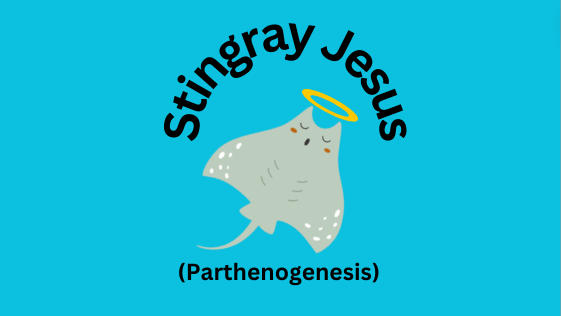Charlotte the Stingray has turned many heads her way. Residing in Hendersonville, N.C., she’s drawn marine lovers from across the U.S. to discover her unique situation. Known as parthenogenesis, this round stingray is currently pregnant, but she hasn’t had contact with any other stingrays in eight years.
“This discovery will … enhance our view of the ocean. It’s a wonderful, awe-filled part of our world that we are still learning and discovering things about daily,” said Nicole Hooks, marine ecology teacher at Athens Drive.
Charlotte the Stingray lives at the ECCO Aquarium. She shares a tank with many animals, among which are two bamboo sharks. Because they’re both male, many speculated for a long time that they may be the true parents of Charlotte’s pups. Scientists quickly squashed that theory, stating that due to genetic matchups, they were incompatible to mate. Their number of chromosomes do not match, meaning their children would not be viable for life.
“We were discussing the theories of it, like did this shark cross breed? Because of the bites,” said Sydney Dudas, a marine ecology student and Senior at Athens Drive.
Parthenogenesis, more commonly identified as asexual reproduction, occurs when a female animal can create viable young without the influence of a male of the same species. The egg of the female animal splits off along with extra cells called polar bodies. In normal situations, the egg combines with a sperm cell in the way normal fertilization occurs. In parthenogenesis, however, the polar bodies recombine with the egg, creating the fertilized egg. This leaves the offspring less genetically diverse than if it was born to separate parents. It’s never been documented before in the round stingray, which is what makes it such a spectacle. It does occur in many other species, however. Some species of shark and many species of python have been documented to go through the process already.
“Then we discussed Parthenogenesis, and, you know, Stingray Jesus,” said Dudas.
While this is the first time that humans as a whole have documented a round stingray asexually reproducing, that does not mean that it has never happened in this species. There is a lot left for experts to learn about what happens under the ocean. This is simply the first time humans have observed it.
“Stingray gestation is about three months. They said they’ve been holding onto the news for so long, it should be soon,” said Dudas.
Marine Ecology classes have taken a keen note of this case. Hooks included Charlotte in some morning work when her case first came out. The class plans on returning to it when Charlotte gives birth, which should be soon. It’s difficult to determine when she will give birth, as this isn’t your typical pregnancy, but it is expected that she should give birth any day now.
“We plan on checking in regularly via the aquarium’s Instagram and coming back to it when she has the pups,” said Hooks.







